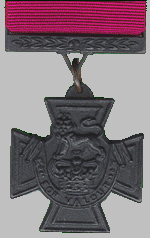
A Short History of the Victoria Cross



The Victoria Cross is the British realm's highest award for gallantry in the face of the enemy. It has precedence over any other of our Sovereign's awards or Commonwealth decorations.
The Victoria Cross was founded by Royal Warrant January 29, 1856 to recognize the bravery of those who were then fighting the Crimean War. It was available to all soldiers and "neither rank, nor long service, nor wounds, nor any other circumstance or condition whatsoever, save the merit of conspicuous bravery" could make one eligible - truly a democratic award.
The Cross itself is cast from the bronze of cannons captured at Sevastopol during the Crimean War. The design, chosen by Queen Victoria, consists of a cross patee ensigned with the Royal Crest resting upon a scroll bearing the words "For Valour." The reverse of the suspender bar is engraved with the recipients' name, rank and unit while the reverse of the cross is engraved with the date of the deed for which the recipient was honoured.
Since its inception the Victoria Cross has been awarded 1,350 times. The youngest recipient was 15 years old and the eldest was 69 years old. Three cases exist where both father and son have won the Victoria Cross; four pairs of brothers have also been recipients. Four Victoria Crosses have been awarded to civilians and while no woman has been awarded the Victoria Cross a gold representation of the decoration was awarded to Mrs. Webber Harris for her efforts in nursing cholera victims. Three men have been awarded the Victoria Cross twice.